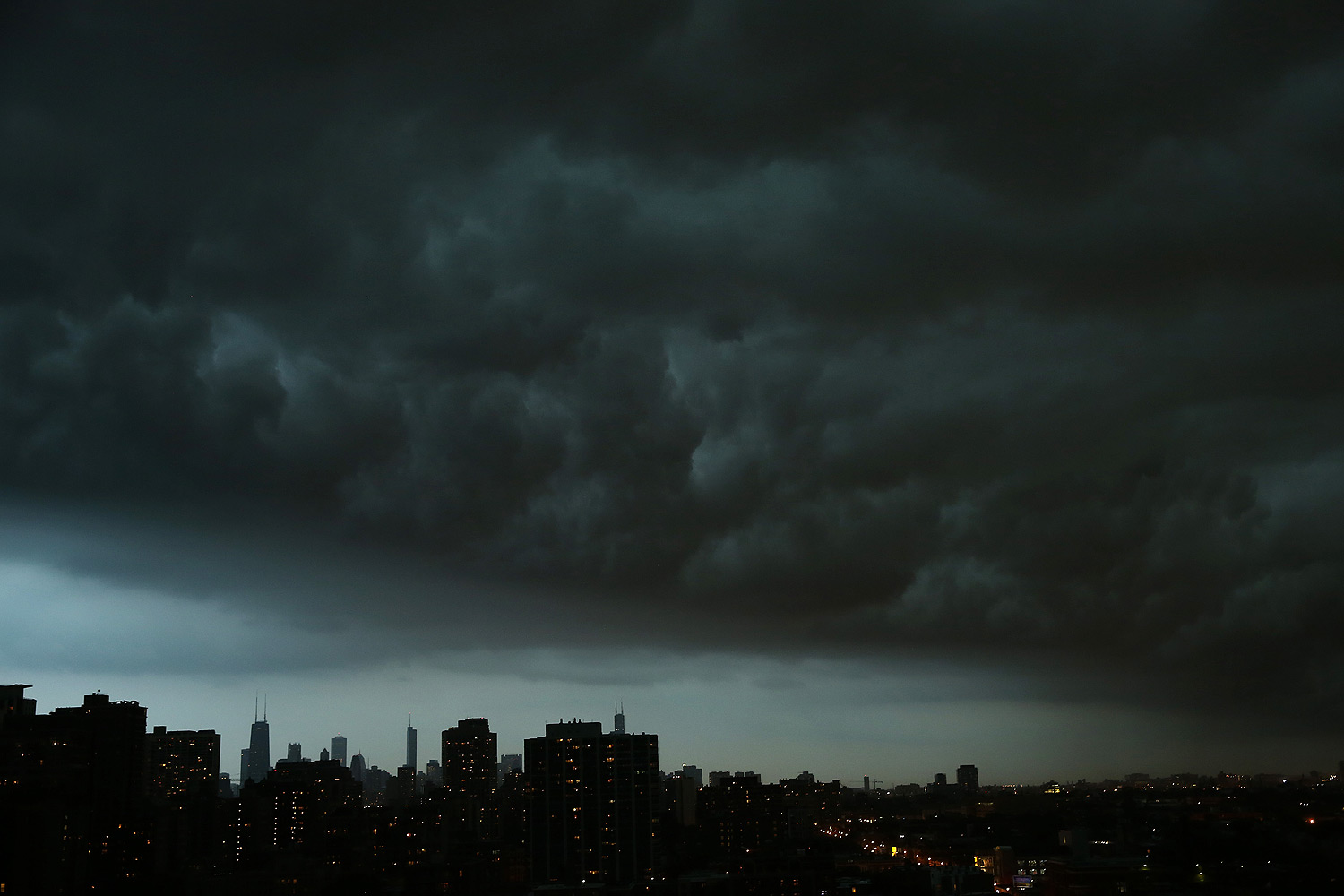As tornado season looms on the horizon, National Weather Service forecasters in the Chicago area and across the nation are bracing for the possibility of another type of storm—more budget and staff cuts.
This has set off alarm bells for the meteorologists who say understaffed centers are already stretched to a breaking point as they attempt to deal with an increasing number of deadly climate and extreme weather events that last year set an a record high of more than $300 billion in losses in the United States.
President Donald Trump’s administration has responded by proposing to slash the National Weather Service’s 2019 budget by $75 million dollars, about eight percent, and eliminate 355 jobs at the agency, including 248 forecasting positions.
“Three years ago 23 percent of our (Chicago region) forecasting staff was cut,” says local meteorologist Gino Izzi, a union representative for the National Weather Service Employees Organization, which represents about 3,500 forecasters and technicians nationwide.
In the Chicago region, Izzi says, there are only 10 forecasters responsible for the all-day, every-day responsibility of monitoring the weather for 10 million people in 18 counties in North and Central Illinois, five counties in Northwest Indiana, and the Lake Michigan shorelines of Illinois and Indiana. His office also produces the forecasts for the open waters of Lake Michigan and the aviation forecasts for Midway and O’Hare, one of the busiest airspaces in the nation.
“And no larger city in the country is more susceptible to tornadoes than Chicago,” he adds, pointing out it’s a common, but misguided notion, that somehow Lake Michigan shields the Chicago area from tornadoes. “There was one that touched down in the fall of 2006 in the Rogers Park neighborhood by Loyola University,” he says. Another was spotted near Midway Airport on the city’s far southwest side in 2016.
On top of that, Izzi says the Chicago region offers unique challenges since it has some of the “most variable weather in the nation”–running the gamut from blizzards and flooding to heat waves and droughts.
Nationwide, NWS staffers are struggling to keep up as jobs go unfilled for long periods due to attrition, according to a GOA report that says ongoing staff vacancies make it difficult for those remaining to “complete key tasks.” This is cause for concern given the frequency and intensity of weather-related disasters, including 16 separate events that each left more $1 billion in damages in 2017.
“And those numbers don’t account for the human toll,” says Izzi. Weather and climate disasters killed 362 people last year, according to the National Oceanic and Atmospheric Administration. Some say the toll is much higher. A few months after Hurricane Maria hit, the New York Times reported that a more “reliable measure of the disaster’s human impact” was 472 deaths just in Puerto Rico alone.
Stormy conditions and more layoffs likely
The Commerce Department, which oversees NOAA and the National Weather Service, confirmed in an emailed statement that there are "about 300 funded vacancies across the National Weather Service – this is roughly 7 percent of the agency's 4,520 total funded positions” but said it is “prioritizing hiring” for “critical vacancies.”
The statement went on to say the proposed new budget allows for “reducing operational hours at various offices [with the] use of collaborative forecast processes, technological innovation…(and) moving away from a uniform staffing model to redistribute staff.” It also notes the reduction of 355 positions “equates to 217 full-time employees” and will not “affect NOAA’s commitment to providing local communities with forecast and warning coverage 24 hours a day, 7 days a week, 365 days a year.”
But some are unconvinced, including Texas-based meteorologist Bill Hopkins, the executive vice president of the National Weather Service Employees Organization, who describes the proposed cuts—which are not yet a done deal and still need congressional approval as “a disaster in the making.”
Both Izzi and Hopkins are concerned about replacing meteorologists with automated systems. Both say that automated systems rely primarily on consistent patterns, but Chicago and the rest of the nation have been experiencing rapidly shifting weather patterns and unique occurrences that require human observations and critical thinking skills for precise forecasting. Ironically, the meteorologists who make a career out of forecasting future trends say details haven’t been released so they can’t accurately predict which manned weather stations might be consolidated, automated or closed on weekend and overnight hours.
“[Automated systems] can be quite successful during times of routine or relatively benign weather,” Izzi says, “but [they] are most prone to error and failure during the extreme weather which is most likely to pose a threat to life and property.”



